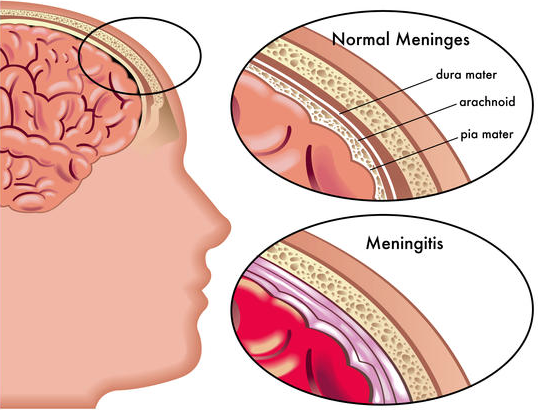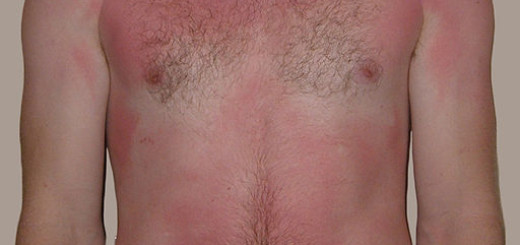Meningitis in Children and Babies
Meningitis refers to the infection of the meninges, the layered membranes that support and protect the brain and spinal cord. It most commonly strikes infants and children between the ages of one month and five years, although it can affect people of any age. Children under age two are particularly susceptible, and boys are affected more often than girls. Meningitis is always a serious condition that warrants emergency medical care.
In this first aid blog post we’ll take a more in-depth look at the causes and treatment of Meningitis.
Causes of Meningitis
A variety of microbes can cause meningitis. The most serious forms are caused by bacteria that spread through the blood to the meninges from infections elsewhere in the body, such as the lungs, the sinuses or the throat.
Newborns sometimes develop meningitis as a result of infections their mothers contracted during the last week of pregnancy. Rupture of the fetal membranes more than 24 hours before birth also increases the risk of meningitis in a newborn, as does premature birth. Other factors associated with meningitis in children of all ages include severe burns, head injuries and chronic illnesses, such as sickle-cell anemia.
Viruses such as the Coxsackie virus and those responsible for chicken pox and mononucleosis also can cause meningitis. This type, known as aseptic meningitis, is generally less serious than the bacterial type.
Signs and Symptoms of Meningitis
Meningitis causes nonspecific symptoms in infants and toddlers. Often, parents will simply have a strong sense that all is not well, even though dramatic symptoms, such as a high fever, may not be present. Instead, the infant may be unwilling to nurse or take a bottle. Sucking may be feeble, and diarrhea and vomiting may occur. The baby may be listless, irritable, and the temperature may be elevated or abnormally low. Drowsiness, irregular breathing and seizures also may occur. Another possible sign is bulging of the soft spot in the top center of the baby’s head.
Symptoms in older children include irritability, agitation and loss of appetite, followed by the abrupt onset of fever, chills, headache, nausea and vomiting, sometimes along with confusion. This pattern, however, is by no means universal. Some children develop signs and symptoms more slowly, so the disease looks at first like a case of the flu. Children old enough to verbalize their symptoms may complain of back pain, neck stiffness and sensitivity to light.
Treatment Options for Meningitis
An infant or child with bacterial meningitis will be hospitalized and given intravenous antibiotics, along with medication to control fever and fluids to prevent dehydration. A child with bacterial meningitis is isolated from other patients. Nurses, doctors and parents may have to wear protective gowns and gloves in the child’s room. The child’s close contacts will need to take antibiotics as a precaution against developing the disease or reinfecting the child.
In cases of aseptic meningitis, hospitalization and isolation may be necessary until bacterial meningitis is ruled out. Otherwise, treatment is focused on relieving discomfort and waiting for the infection to subside, which usually takes three to ten days.
Complications of Meningitis
Infants and children with bacterial meningitis may develop hydrocephalus, brain abscess and impaired hearing, vision and poor muscle control. In addition, bacterial meningitis sometimes leaves a child with a long-term seizure disorder. Some evidence suggests that children who have had meningitis run an increased risk of developing behavior problems, learning disabilities and attention-deficit disorder. In general, though, the outlook for children with meningitis has improved greatly in recent years, thanks to better antibiotics and more rapid diagnosis.
Prevention of Meningitis
Until the mid-1980s, Hemophilus influenza type B was the bacterium responsible for most cases of meningitis in children, especially in the under-two age group. Widespread immunization against this organism has caused a sharp decline in the number of cases of meningitis. The American Academy of Pediatrics strongly urges that all children be immunized against this organism.
Vaccines against other organisms associated with meningitis also are available, although they are recommended mainly for children at high risk of infection due to chronic illness or suppressed immunity.






